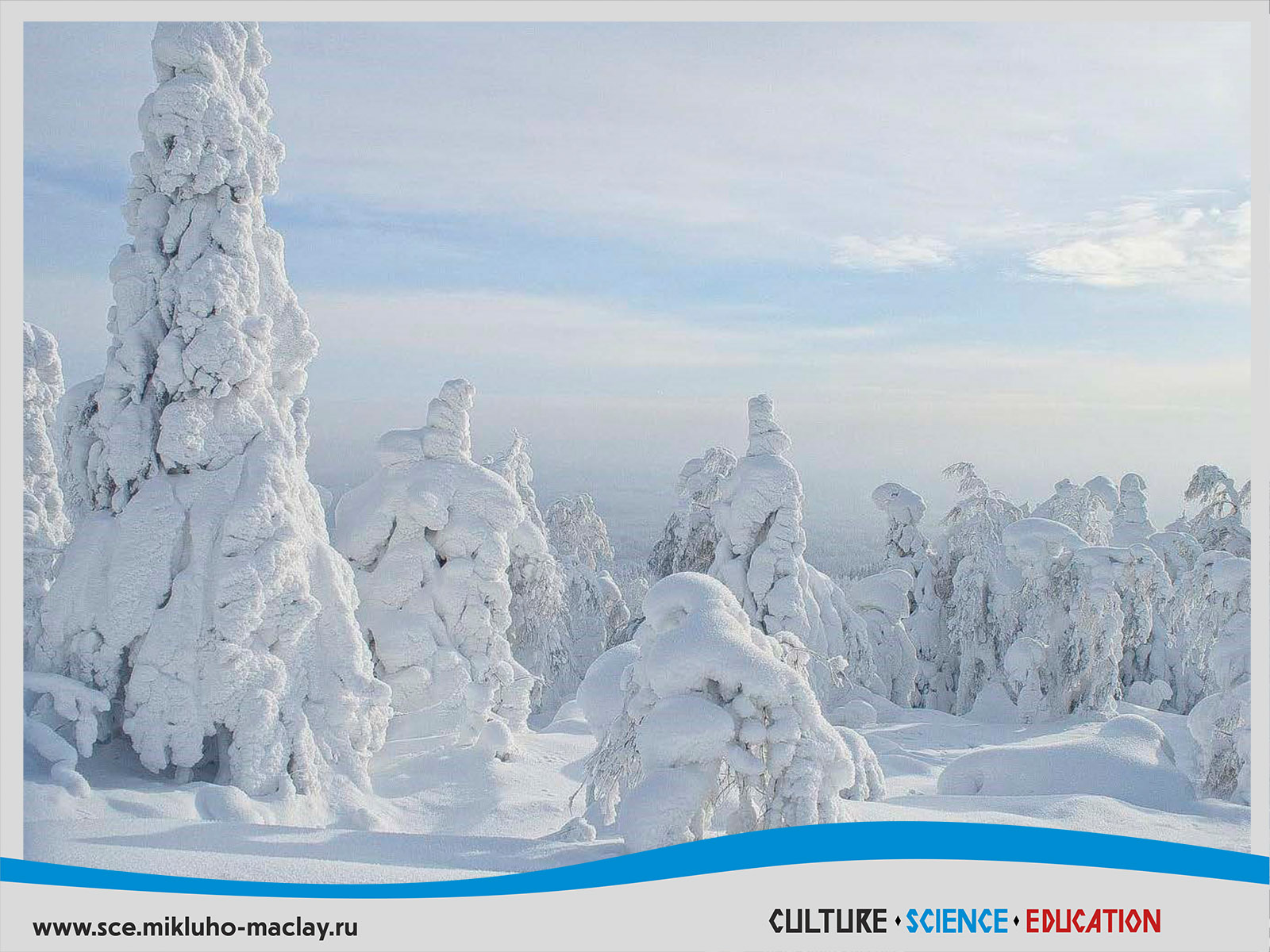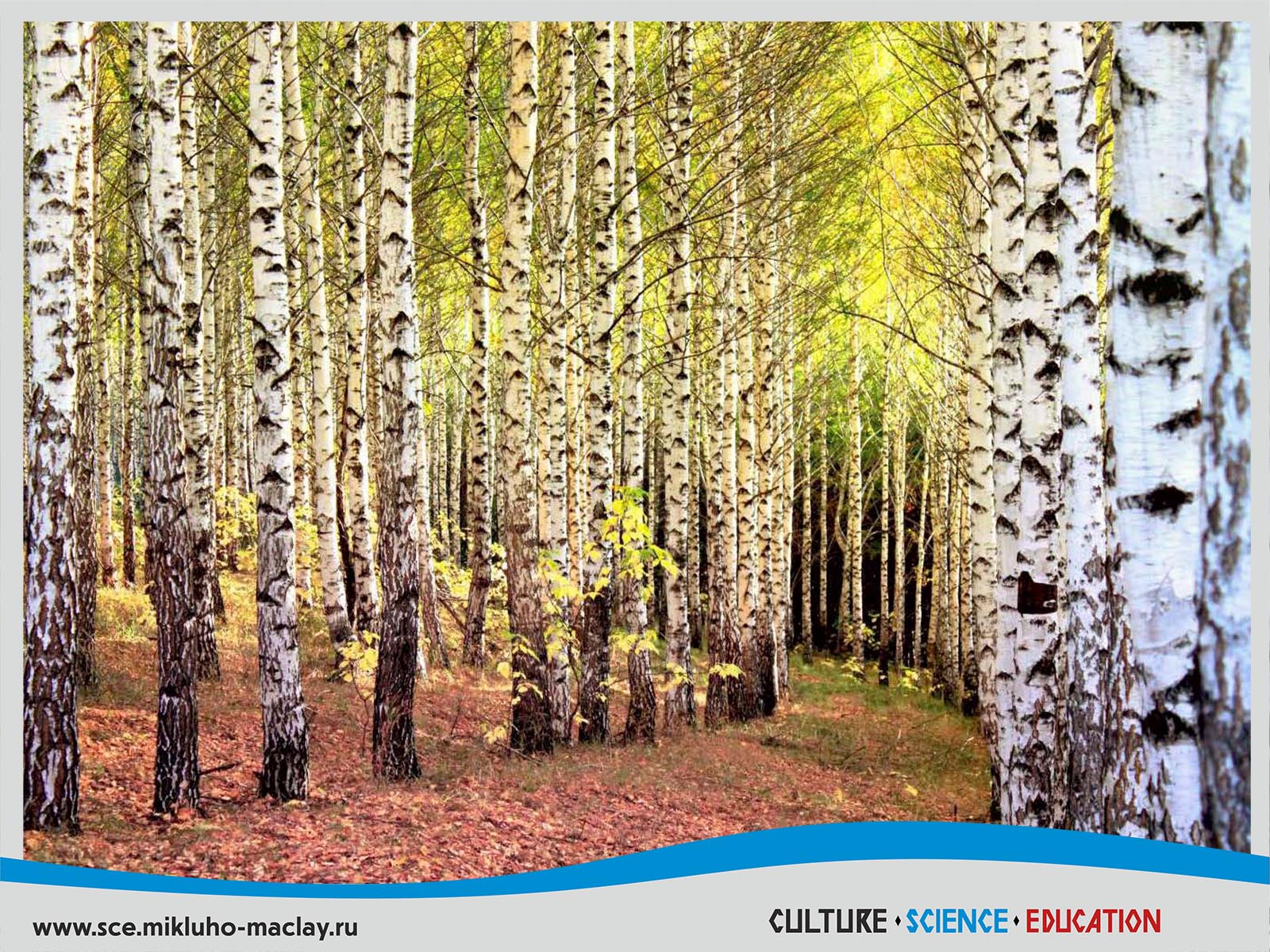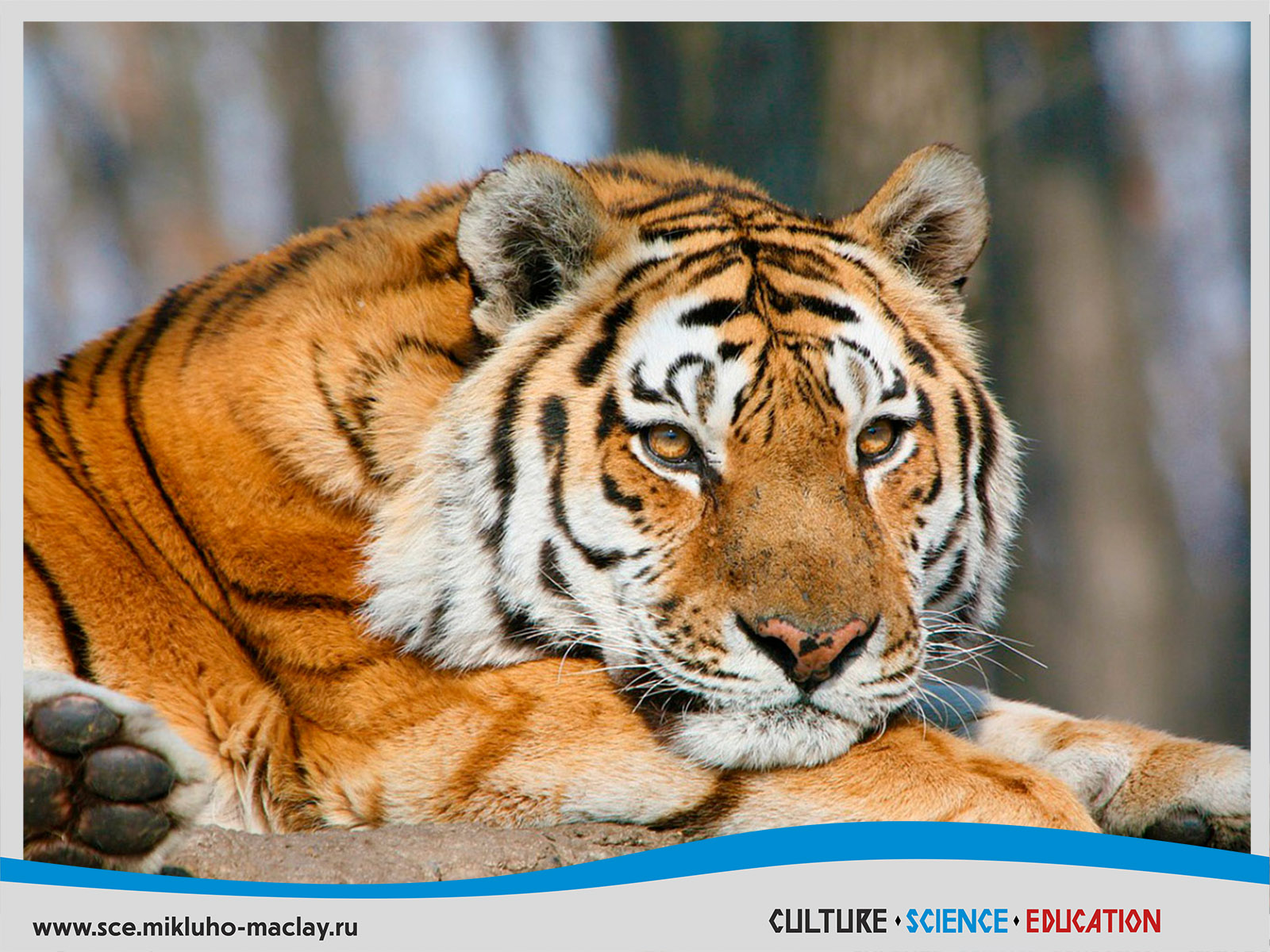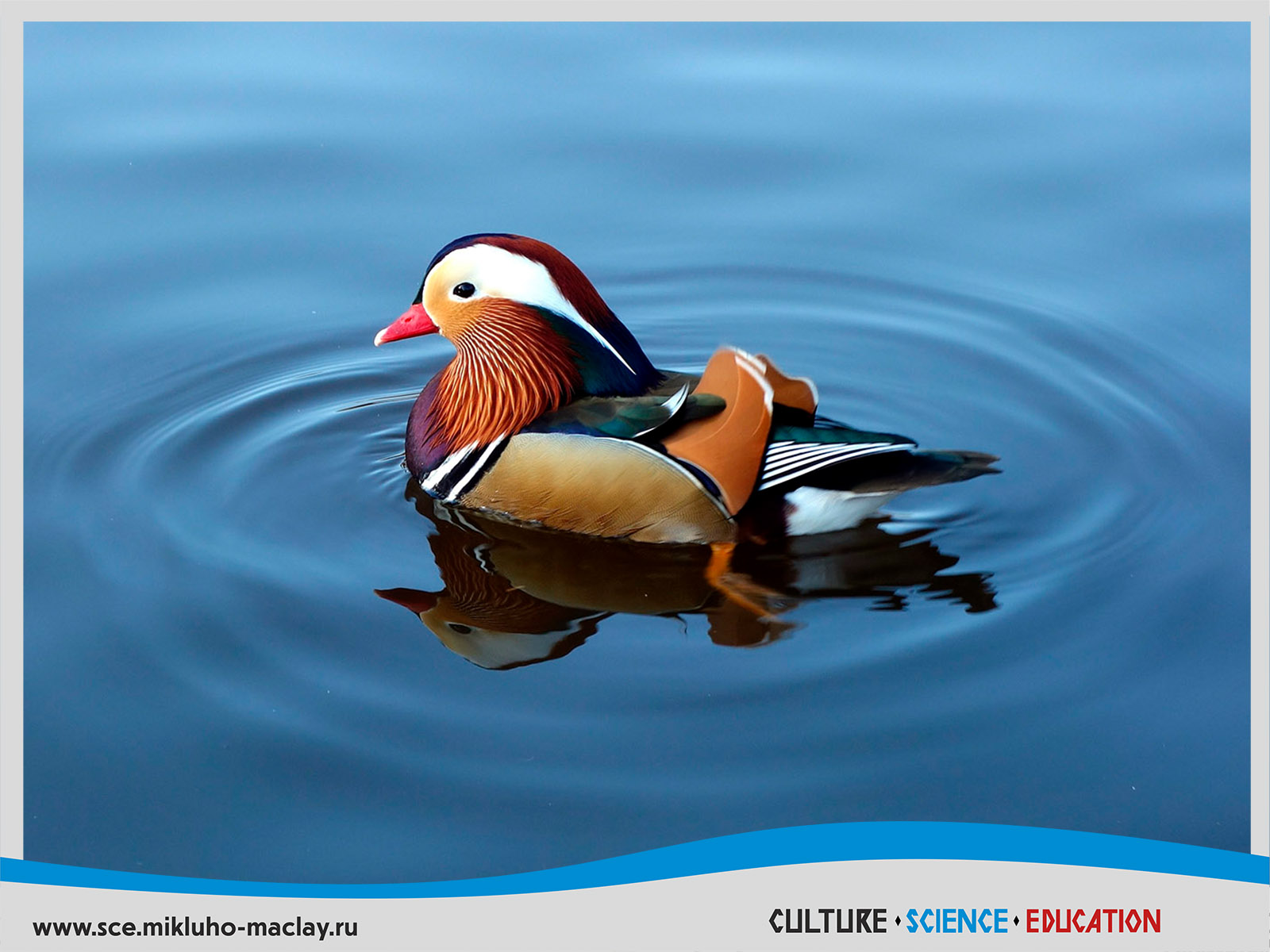Russian Climate
There is an opinion in the world that the climate in Russia is frosty and cold. However, not everyone knows that because of the huge territory of Russia there is extremely diverse weather, and the Country is located in several climatic zones. The climate in Russia is characterized by a clear division into warm and cold seasons.
In the Northern regions of Russia is quite cold. The people living there suffer from harsh winters and a lack of summer. Moreover, there are places in Russia where the temperature in January falls below -50 °C.
Arctic zone occupies the North of the Country, where deserts and tundra are common. The Arctic zone is characterized by long-lasting frosty winter and short cold summer, which last from two to three weeks. Temperature ranges from -40 °C to +5 °C.
Subarctic zone is characterized by severe weather conditions. The zone is characterized by prolonged cold winters, strong winds, boggy areas, rare summer warming. The Subarctic zone differs from the Arctic zone in weather conditions, high rainfall, slightly higher average annual temperature and fewer permafrost zones. The Subarctic zone contains a large number of swamps. Temperature ranges from +15°C to -30 °C.
Temperate climate zone. The most part of Russia is located in the temperate climate zone. It is divided into four parts: continental (Western Siberia), temperate continental (the most stable, the European part of the Russian Federation), extreme continental (Eastern Siberia) and monsoon (weather conditions depend on the seasonal winds circulation).
Most of the European plains are characterized by temperate weather.
Subtropical zone occupies the European South of Russia. Only the Northern part of the Subtropical zone occupies the territory of Russia, so the climate there is more temperate. It is believed that this is the best region for farming, because there is quite hot and dry summer, and winter is mild and short. Mountain areas are more arid, and the sea area is humid and warm. At the same time, the Black Sea coast is the only region of the Country where the temperature in winter does not fall below zero, and snow is extremely rare.
Climatic conditions have always played an important role in the history of the country. It is known that the help to the Russian soldiers in many battles was rendered by cold winter, to which opponents were not ready.

Winter. Photo by Yurii Kuznetsov

Birch is the symbol of Russia. Photo by Denis Patkov

Summer. Photo by Sergey Gorbachev
Russian Nature
Flora is quite difficult to adapt in the extreme climatic conditions of the Arctic; therefore, mosses and lichens mainly grow there. The animals adapted better to this region.
Fauna: narwhals, seals, polar bears, loons, guillemots.
Flora: snow saxifrage, snow buttercup, Arctic poppy, foxtail grass.
Tundra is further south. There are many rivers, lakes and swamps in this zone. Tundra waters are rich in fish, shellfish and other aquatic animals. Fish attracts birds and they rush to raise up their nestlings and teach them to fly before the winter, in order to fly to warm countries in autumn. As for birds, willow ptarmigan and snowy owl are mostly common.
Also, the tundra is home to a large number of mammals that have adapted to living among the ice and snow. In summer, the tundra blooms, and in autumn it is covered with colorful fields of berries (blueberries, cloudberries) and mushrooms.
Flora: haircap moss, woolly willow, wild rosemary, heather, mosses, lichens, mushrooms, berries.
Fauna: reindeer, polar fox, wolf, lemming, falcon, willow ptarmigan.
Taiga is not as harsh as the tundra. There are a lot of taiga rivers and streams, lakes, softwood forests, swamps, mires overgrown around with cranberries, cowberries and blueberries. The berries attract lots of local animals and birds. With the onset of winter, many birds fly to the South, some animals move to the South of the Taiga, others hibernate, and many animals do not leave it neither in summer nor in winter.
Flora: Siberian spruce, Asian globeflower, suillus, hogweed, cowberries, Siberian larch, juniper, fir, rowan, Siberian cedar, blueberry, winter aconite.
Fauna: chipmunk, spotted nutcracker, lynx, Eurasian eagle-owl, golden eagle, brown bear, wolf, wood grouse, sable, wolverine, pine grosbeak.
In the mixed forests, the climate is milder than in the taiga. There is a large number of hares and foxes, as there are many fields in the mixed forests zone. Hares eat winter wheat, and foxes – field mice.
To the South of the taiga, the climate becomes milder, the coniferous forest grows thin. Here we can see more birches, oaks, maples, aspens and other shrubs and trees. Thus, mixed forests are formed. Under the trees the shrubs grow: hazel, strawberry-bush, elder, raspberry, buckthorn, viburnum, and under them – an abundance of herbs. Moss grows only in damp dark places.
Flora: pine, oak, bellflower, maple, alder, linden, birch, spruce, rosehip, penny bun, elder, lily-of-the-valley.
Fauna: forest squirrel, bison, hedgehog, golden oriole, chipmunk, moose, white hare, fox, siskin, wild boar, weasel, grouse, beaver, badger, marten, bullfinch, roe deer, grus, wels catfish, pike.
Deserts and semi-deserts of Russia occupy a small territory of the Country mostly only in the desert part of the Caspian Lowland. The climate of deserts and semi-deserts is very severe – saline soil, gray-colored and gray-brown-colored desert soil. Small plants with a strong root system.
Flora: artemisia, alhagi, ephedra.
Fauna: jerboa, corsac fox, long-eared hedgehog, pink pelican.
The mountainous regions of Russia provide its animals severe conditions: piercing icy winds blow, temperature changes dramatically and it is difficult to get food. The mountainous area is located along the Southern and Eastern borders of Russia. The southernmost and highest mountains – Caucasus. The other mountain ranges and highlands are located in the South, North-East of Siberia and the far East. Ural Mountains locate among the plains. In the mountains, the climate changes dramatically with altitude: the higher, the colder. If there are forests and steppes at the foot and on the lower slopes of the mountains, then only coniferous forests of various species of pines, spruces, firs and larches can locate higher. Siberian barberry, spring gentian.
Flora: barberry, poppy, edelweiss
Fauna: snow sheep, rock partridges, snow leopard, cinereous vulture, hill pigeon, red deer, bar-headed goose.
Far East – is a region inhabited by the world’s largest brown bears, Siberian tigers and Amur leopards. There is a bunch of birds making noise, a rookery of seals, sea otters swaying along the shore on the Commander Islands. In one place, among the wild nature near the Ussuri river, one can meet the Northern inhabitants – moose and sable, and the Southern – spotted deer and leopard. Exotic birds sparkle with colorful feathers in the trees, and the Siberian tiger fords the river. In the North, on the Kamchatka Peninsula, a stone birch grows, and in the Valley of Geysers, as scheduled, fountains of hot water burst from the ground.
Flora: Wild magnolias trees with extremely beautiful large aromatic flowers grow on one of the Kuril Islands. Also, maple, ginseng, lemongrass, weigela, daylilies, peony grow there.
Fauna: Himalayan bear, Mandarin duck, blue rock thrush, pheasant, Amur tiger, Steller’s sea eagle, Amur leopard, sika deer, sea otter, Amur forest cat, dhole, Amur goral.

Amur Tiger. Photo by Victor Semenov

Brown Bear. Photo by Zsuzsanna Toth

Tangerine Duck. Photo by Johnnie Shannon
